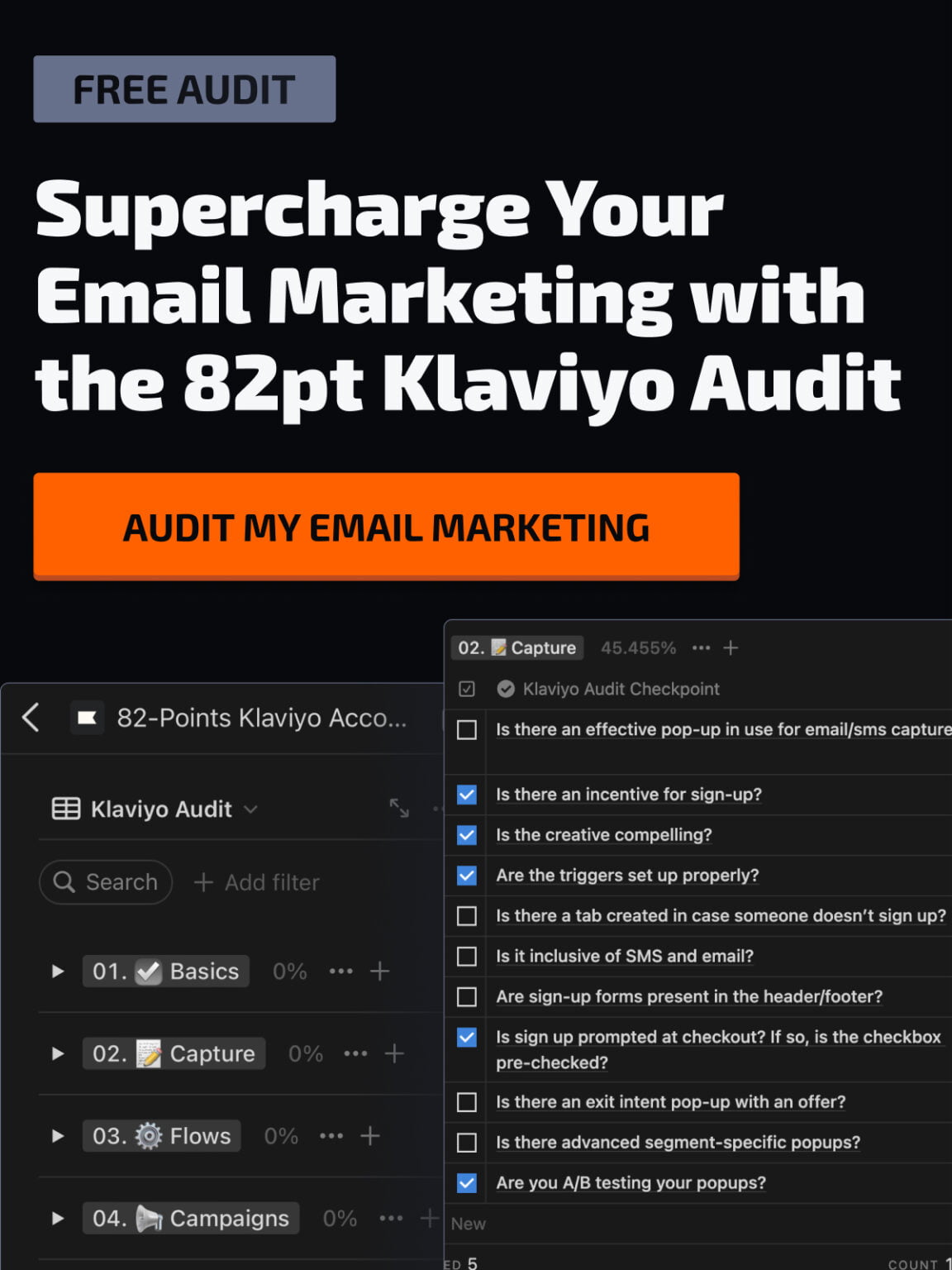Table of Contents
In the ever-evolving landscape of ecommerce, the difference between thriving and merely surviving often lies in mastering cost-effective marketing strategies. For small to medium-sized ecommerce businesses, this means finding innovative ways to minimize customer acquisition costs (CAC). A powerful yet often overlooked strategy for achieving this is implementing Self Liquidating Offers (SLOs). These offers are not just about driving sales; they’re about smart economics and sustainable growth.
Understanding Self Liquidating Offers (SLOs) in Ecommerce
At its heart, a self liquidating offer is a strategic approach designed to balance the scales between marketing expenditure and sales revenue. The essence of Self Liquidating Offers lies in its ability to cover the cost of acquiring a customer, making the customer acquisition process neutral regarding direct marketing expenses. This is particularly crucial in ecommerce, where CAC can rapidly escalate, eating into profit margins.
The concept behind SLOs is straightforward yet impactful. By offering products or services at a low cost—just enough to cover the CAC—you create an enticing proposition for potential customers. These offers are carefully calibrated to deliver high perceived value to the consumer while ensuring that the revenue generated offsets the marketing costs involved in making that sale.
The Role of High Perceived Value in Self Liquidating Offers
The success of an SLO hinges on the perceived value of the offer. It’s not merely about offering something at a low price; it’s about crafting an offer that feels like a ‘steal’ to the customer. This perceived value drives engagement increases the likelihood of purchase, and enhances customer satisfaction, all while keeping your costs in check.
The Splinter Offer Strategy
A key tactic within SLOs is the ‘splinter offer,’ a concept popularized by marketing experts like Ryan Deiss of DigitalMarketer. This approach involves breaking down a product or service into smaller, more affordable pieces, offering these ‘splinters’ at a price that covers your CAC. The splinter offer serves as a low-risk entry point for customers, introducing them to your brand and product line without a significant financial commitment.
Evaluating Your Ecommerce Niche for Self Liquidating Offers
Before diving into Self Liquidating Offers, assessing your specific ecommerce niche is crucial. Different sectors have varying degrees of responsiveness to certain types of offers. Understanding your market, customers’ purchasing behavior, and the competitive landscape is essential in crafting SLOs that resonate with your target audience.
Crafting Self Liquidating Offers That Align with Your Brand
While the primary goal of an SLO is to cover CAC, it’s vital to ensure that these offers align with your brand’s identity and values. Consistency in your marketing approach and brand perception contributes to long-term customer relationships and trust. An SLO should feel like a natural extension of your brand, not a disconnected promotion.
10 Self Liquidating Offer Strategies
Moving into the practical application, we will explore ten different SLO strategies tailored for various ecommerce sectors. Each strategy is designed to provide high perceived value to the customer while ensuring the offer remains cost-effective for the business. From leveraging time-limited deals to innovating with subscription models, these strategies are diverse and adaptable to many ecommerce businesses.
These strategies are more than just a tactic; they are a gateway to understanding your customers better, refining your marketing approach, and ultimately building a more resilient and profitable ecommerce business.
Ensure to try one at a time to avoid half-built bridges (learn more about this concept)
1. Discounted Bundles
The Art of Combining Products
Discounted bundles are a classic Self Liquidating Offer tactic that works across various ecommerce segments. The strategy involves grouping complementary products at a price slightly lower than their cumulative individual prices. This offers customers a perceived high value and ensures the bundle price covers your CAC. The key here is strategically selecting products that complement each other and encouraging buyers to opt for the bundle over individual purchases.
Implementing Discounted Bundles
Analyze your product range to identify items that can be paired or grouped logically. The combination should make sense to your customers and add value to their purchase experience. For instance, a skincare brand might bundle a cleanser, toner, and moisturizer. The discounted price of this bundle should be set in a way that covers the cost of acquiring new customers through targeted marketing campaigns.
2. Free Plus Shipping Offers
Leveraging Perceived Value
Free plus shipping offers are particularly effective in creating a buzz. By offering a product for free and charging only for shipping, you tap into the customer’s perception of getting a great deal. The shipping fee is calculated to cover your CAC, making the offer self-liquidating.
Crafting a Successful Free Plus Shipping Offer
The product chosen for this offer should be enticing enough to attract customers but cost-effective for your business. Ensuring that the shipping fee doesn’t deter customers yet covers your CAC is essential. A careful balance is required here – the product should be desirable enough to justify the shipping cost from the customer’s perspective.
3. Limited Time Offers
Creating a Sense of Urgency
Limited time offers work by creating a sense of urgency and exclusivity. This strategy involves offering a product at a special price for a short duration. The limited availability compels customers to make quicker purchase decisions, leading to a rapid influx of sales that can cover the CAC.
Executing Limited Time Offers
The success of this strategy hinges on two factors: the attractiveness of the offer and the duration of the limited period. The offer must be compelling enough to create immediate interest. The timing should be optimized to create urgency without being so short that potential customers miss out.
4. Seasonal Offers
Capitalizing on Consumer Trends
Seasonal offers are a great way to align your SLOs with customer buying patterns. These can be tied to holidays, seasons, or events, offering products at a special price that aligns with the seasonal demand. The key is to offer products with a high appeal during the specific season and price them to cover your CAC.
Implementing Seasonal Offers
Successful seasonal offers require planning and understanding seasonal trends. For instance, offering special skincare packages during winter or swimwear during summer can attract customers looking for relevant products. The pricing of these offers should be attractive enough to draw in customers while covering acquisition costs.
5. Subscription Model Introduction Offers
Building a Recurring Customer Base
Subscription models in ecommerce are an effective way to ensure customer retention and steady revenue. Introducing customers to this model with a low-cost initial offer can be a powerful Self Liquidating Offer strategy. The initial offer covers the CAC, and the recurring nature of subscriptions ensures a long-term customer relationship.
Crafting an Attractive Subscription Introduction Offer
The initial subscription offer should be appealing to encourage sign-ups. For example, a gourmet food service might offer the first month at a discounted rate. The key is to ensure that the initial discount is enough to cover the CAC while the recurring subscription provides a stable revenue stream.
Each strategy requires a deep understanding of your target audience and a keen sense of pricing strategy. They can cover your CAC and enhance customer loyalty and brand reputation when executed correctly.
6. Upsell at Checkout
Maximizing Revenue per Customer
Upselling at checkout is a strategic move to increase the average order value (AOV). By suggesting additional, complementary products at the point of sale, you can encourage customers to make more significant purchases. This strategy effectively covers the CAC as it leverages an existing buying decision, making the additional sale more straightforward and likely.
Implementing Upsell Strategies
Identify products that complement the initial purchase and offer them at the checkout with a persuasive but non-intrusive prompt. For instance, a laptop customer might be interested in an extended warranty or a carrying case. The pricing of these add-ons should be attractive enough to encourage an impulse buy while ensuring your CAC is covered.
7. Flash Sales
Leveraging Limited Availability for Quick Sales
Flash sales are time-sensitive offers that create a sense of urgency and exclusivity. You can quickly attract many customers by offering products at a significant discount for a limited time. The rapid sales from a flash sale can cover the CAC, especially when promoted effectively.
Executing Flash Sales Successfully
Select products with mass appeal and ensure the discount is substantial enough to create buzz. The sale duration should be short enough to instil urgency but long enough to capture a broad audience. Promote the sale aggressively through your marketing channels to maximize reach and impact.
8. Exclusive Member Offers
Building Brand Loyalty and Repeat Business
Offering exclusive deals to your members or subscribers can reinforce loyalty and encourage repeat purchases. These offers are typically reserved for your existing customer base and can effectively cover the CAC of these customers over time.
Creating Compelling Member Offers
Develop offers that provide genuine value to your members, such as early access to new products, special member-only discounts, or loyalty rewards. The key is to make these offers enticing enough to encourage frequent purchases, offsetting the CAC with repeat business.
9. Cross-Selling Partnerships
Expanding Reach through Collaboration
Cross-selling partnerships involve collaborating with complementary businesses to offer joint deals. This approach spreads the marketing costs and opens up your products to a new audience, potentially reducing the overall CAC.
Implementing Cross-Selling Partnerships
Identify businesses that align with your brand and have a complementary customer base. Work together to create offers that provide value to both customer bases. For example, a fitness apparel brand might partner with a health supplement company to offer bundled deals.
10. Loss Leader Strategy
Attracting Customers with Highly Discounted Products
The loss leader strategy involves offering a product at a low price, sometimes even at a loss, to attract customers. The goal is to recover this initial loss through subsequent purchases of more profitable items.
Applying the Loss Leader Strategy
Choose a popular product at a significantly reduced price. Promote this offer to attract a large number of customers. Once they’re engaged with your brand, employ strategies like upselling or email marketing to encourage further, more profitable purchases.
When implemented thoughtfully and monitored closely, these strategies can help ecommerce businesses efficiently balance their customer acquisition costs with immediate sales revenue, leading to sustainable growth and profitability.
How to Calculate if My Self Liquidating Offer is Working?
Ensuring your Self Liquidating Offer (SLO) is financially viable hinges on clearly understanding your costs versus the revenue generated. Use the business growth formula to determine this is ad costs ≤ net margin. Let’s break this down into actionable steps:
Understanding Ad Costs
Your ad costs are the total expenses incurred in promoting your SLO. This includes costs across various platforms like social media, search engines, and other digital marketing channels. Accurately tracking these expenses is crucial for assessing the profitability of your self liquidating offer.
Calculating Net Margin
Net margin is the profit you make from each sale after deducting the cost of goods sold (COGS) and other direct expenses related to the product. To calculate this:
Determine the Selling Price
This is the price at which your SLO is offered to the customers.
Subtract the COGS
This includes the direct costs of creating or purchasing the product.
Subtract Additional Direct Costs:
Include any additional direct costs incurred in selling the product, like payment processing fees, packaging, and shipping (if not charged to the customer).
The result gives you the net margin per sale. For your self liquidating offer to be effective, the net margin should be greater than or equal to your ad costs.
Implementing the Equation
Once you have your ad costs and net margin, compare the two. Congratulations, your SLO is self-liquidating if your ad costs are less than or equal to your net margin. However, if your ad costs exceed your net margin, it’s time to reevaluate your strategy. This might involve adjusting the price of your offer, finding ways to reduce COGS, or optimizing your advertising strategy to lower ad costs.
Remember, the goal of self liquidating offers is not just to break even but to do so in a way that builds your customer base and enhances your brand’s reach.
Self Liquidating Offers – Conclusion
Self Liquidating Offers are a powerful tool in the ecommerce marketer’s arsenal. They provide a strategic way to cover customer acquisition costs, making your marketing efforts more efficient and cost-effective. When executed correctly, SLOs can attract new customers and set the stage for long-term profitability and customer loyalty.
However, the success of an self liquidating offer lies in careful planning, accurate cost calculation, and continuous optimization. It requires a deep understanding of your market, audience, and financials. By mastering these elements, ecommerce businesses can turn their marketing initiatives from cost centers into profitable, self-sustaining operations that fuel growth and brand development.
In conclusion, SLOs are about immediate financial equilibrium and strategically positioning your brand for sustainable growth in the competitive ecommerce landscape. With the right approach, Self Liquidating Offers can be a transformative strategy for your business, providing a path to survive and thrive in the dynamic world of ecommerce.
FAQ on Self Liquidating Offers in Ecommerce
What is a Self Liquidating Offer (SLO) in Ecommerce?
An SLO is a marketing strategy where the revenue from the initial sale covers the cost of acquiring that customer. It’s designed to minimize customer acquisition costs, making marketing efforts self-sustaining.
How Do Self Liquidating Offers Work?
SLOs work by offering a product or service at a low cost, enough to cover the customer acquisition cost. The goal is to provide high perceived value to the customer while ensuring the sale offsets the marketing expenses.
What is the Splinter Offer Strategy in SLOs?
The splinter offer strategy involves separating a product or service into smaller, affordable parts and selling them separately. This method provides an accessible entry point for customers and can cover acquisition costs effectively.
How Can I Determine the Right Price for My SLO?
Calculate your customer acquisition cost and set the SLO price slightly above this figure to price your SLO effectively. Consider product costs, perceived value, and competitive pricing.
What Makes a Successful Self Liquidating Offer?
Success in SLOs hinges on offering high perceived value, aligning the offer with your brand, and ensuring the price covers acquisition costs. Effective marketing and targeting the right audience are also crucial.
Can SLOs Lead to Long-Term Customer Relationships?
What are Some Common Strategies for SLOs in Ecommerce?
Common strategies include discounted bundles, free plus shipping offers, limited-time deals, seasonal offers, and introductory subscriptions.
How Do I Measure the Effectiveness of My SLO?
Measure effectiveness by comparing the net margin from sales against your ad costs. Effective SLOs should have ad costs less than or equal to the net margin.
What Role Does Perceived Value Play in SLOs?
Perceived value is crucial as it influences the customer’s decision to purchase. The offer must feel like a great deal to the customer, even though it is priced to cover your costs.
Are There Any Risks Involved in Implementing SLOs?
Risks include misjudging customer acquisition costs, setting incorrect pricing, and potential misalignment with brand values. Proper planning and analysis can mitigate these risks.



